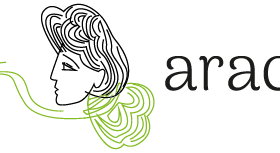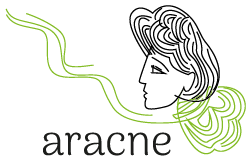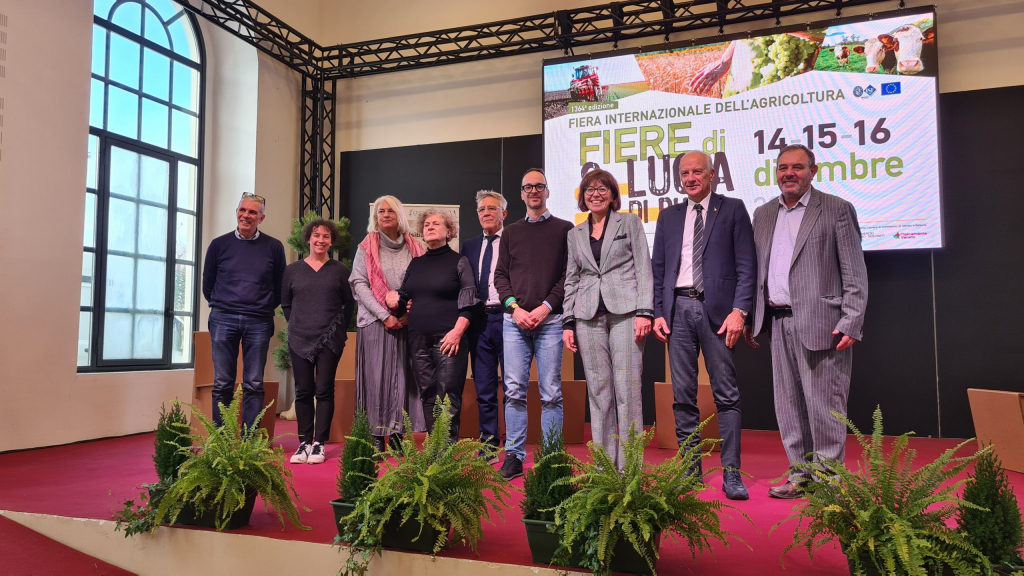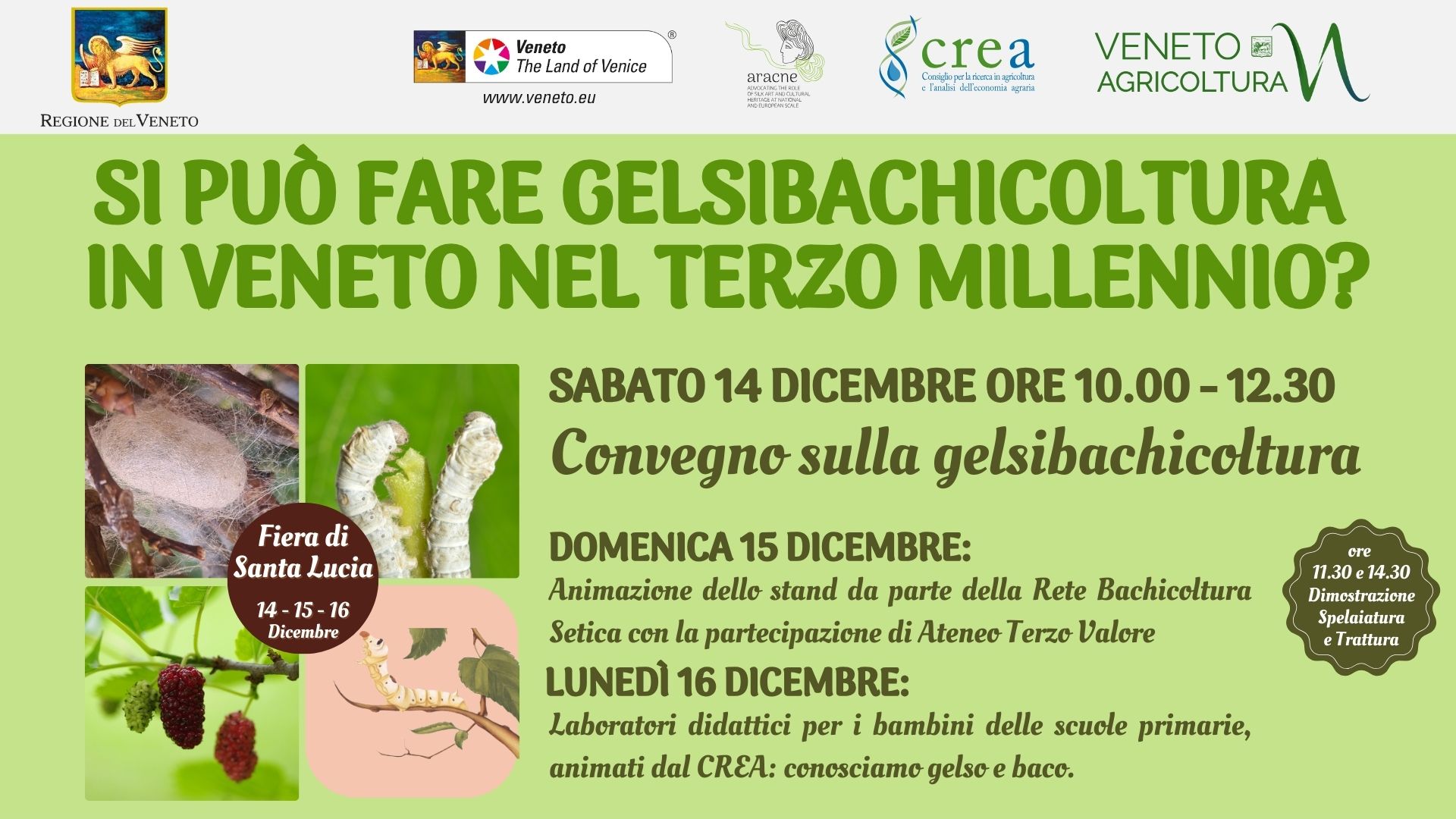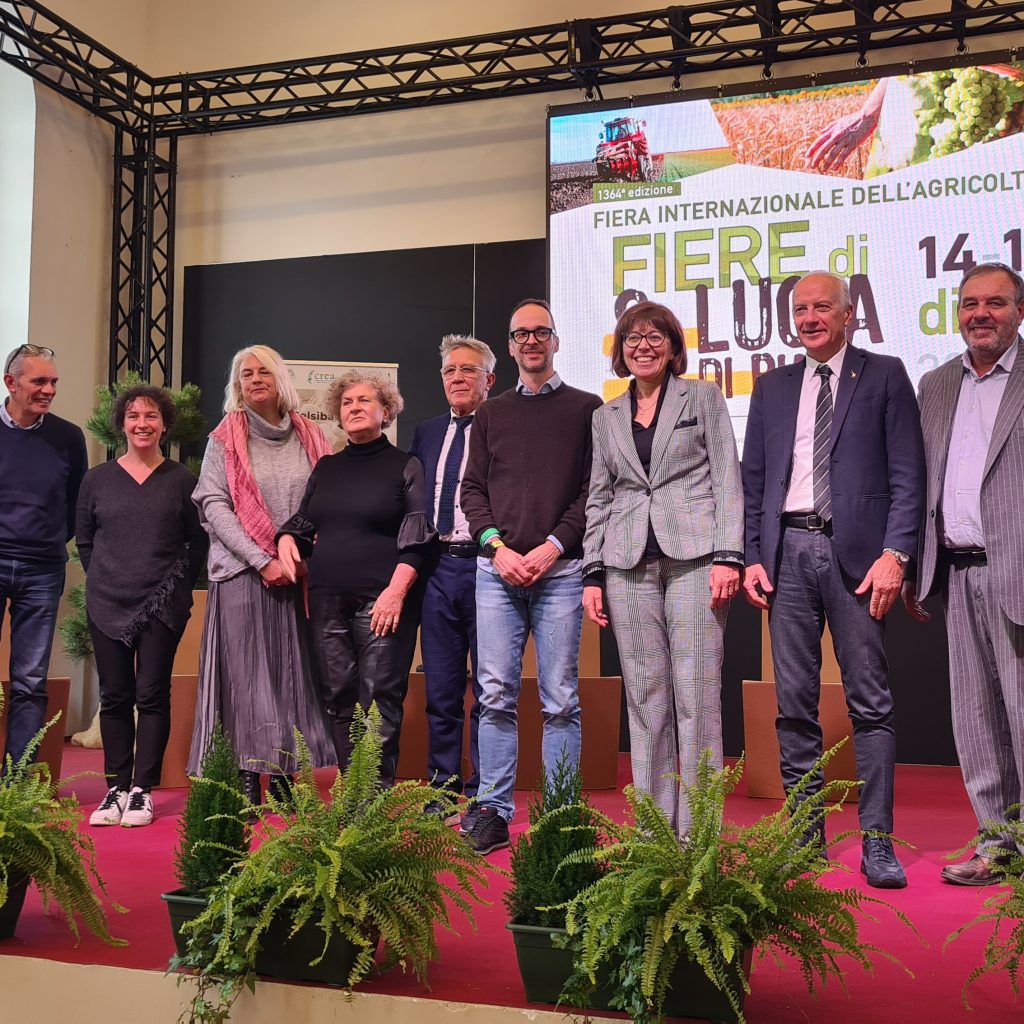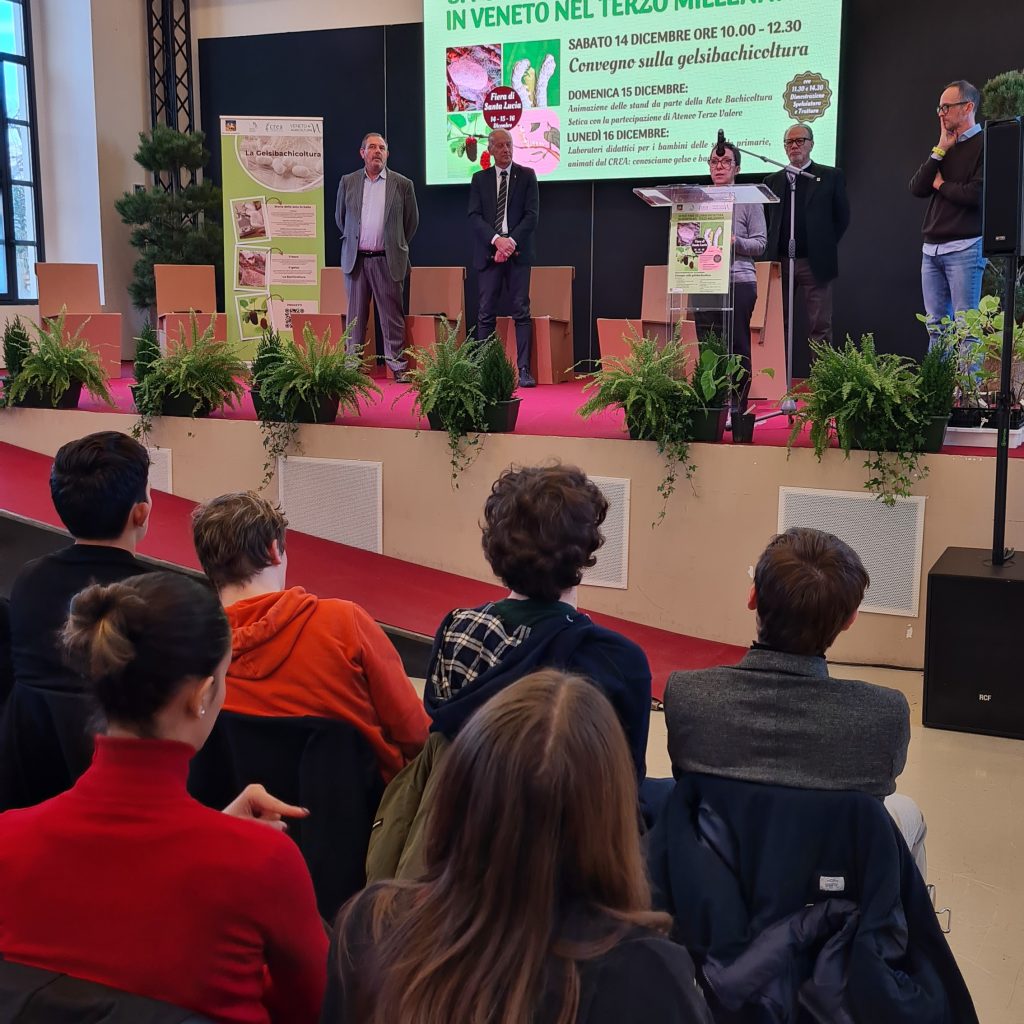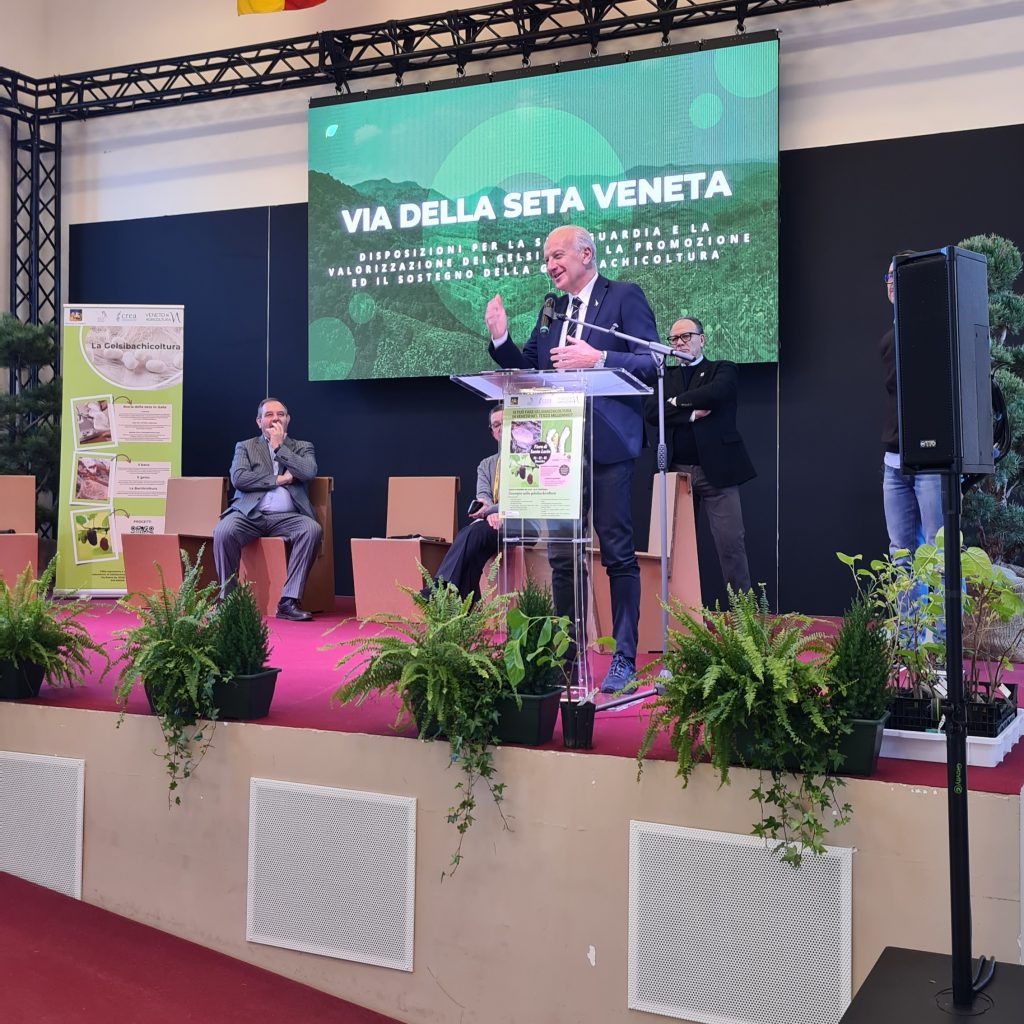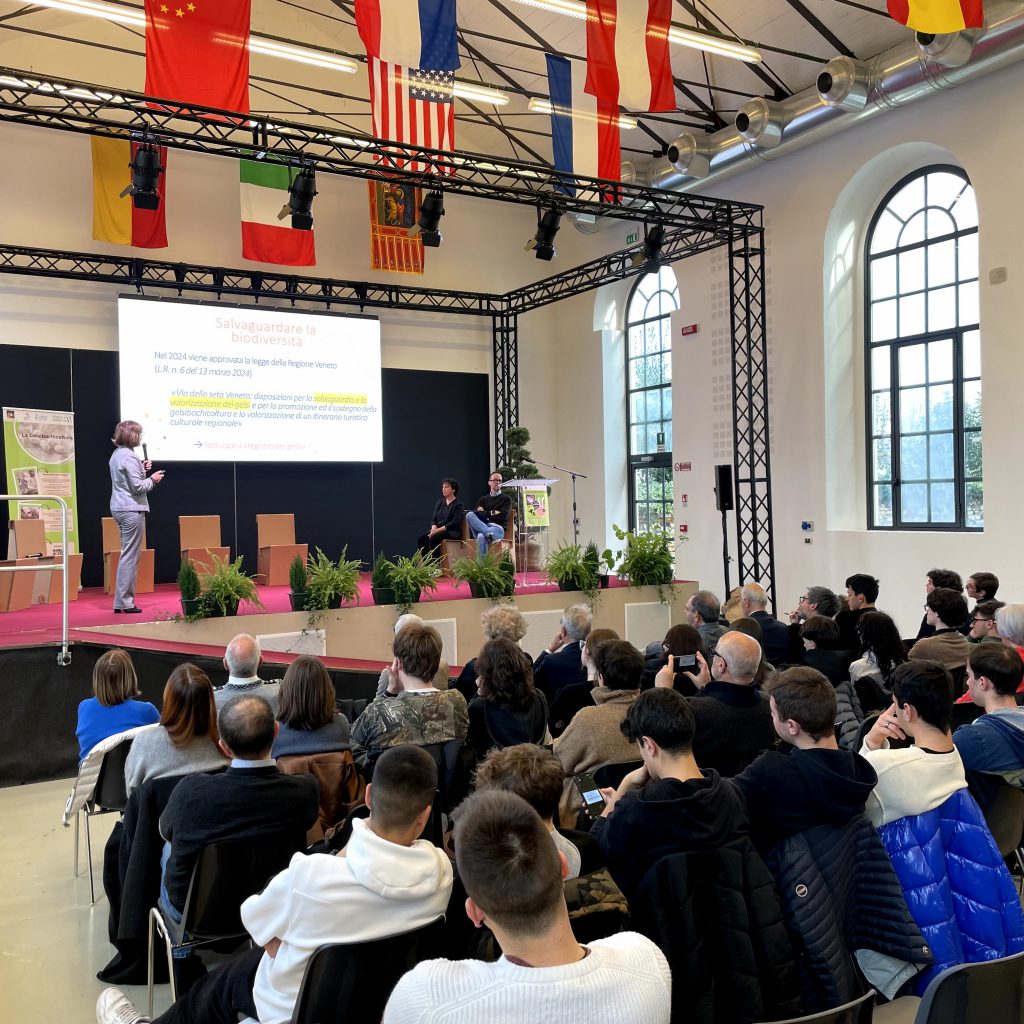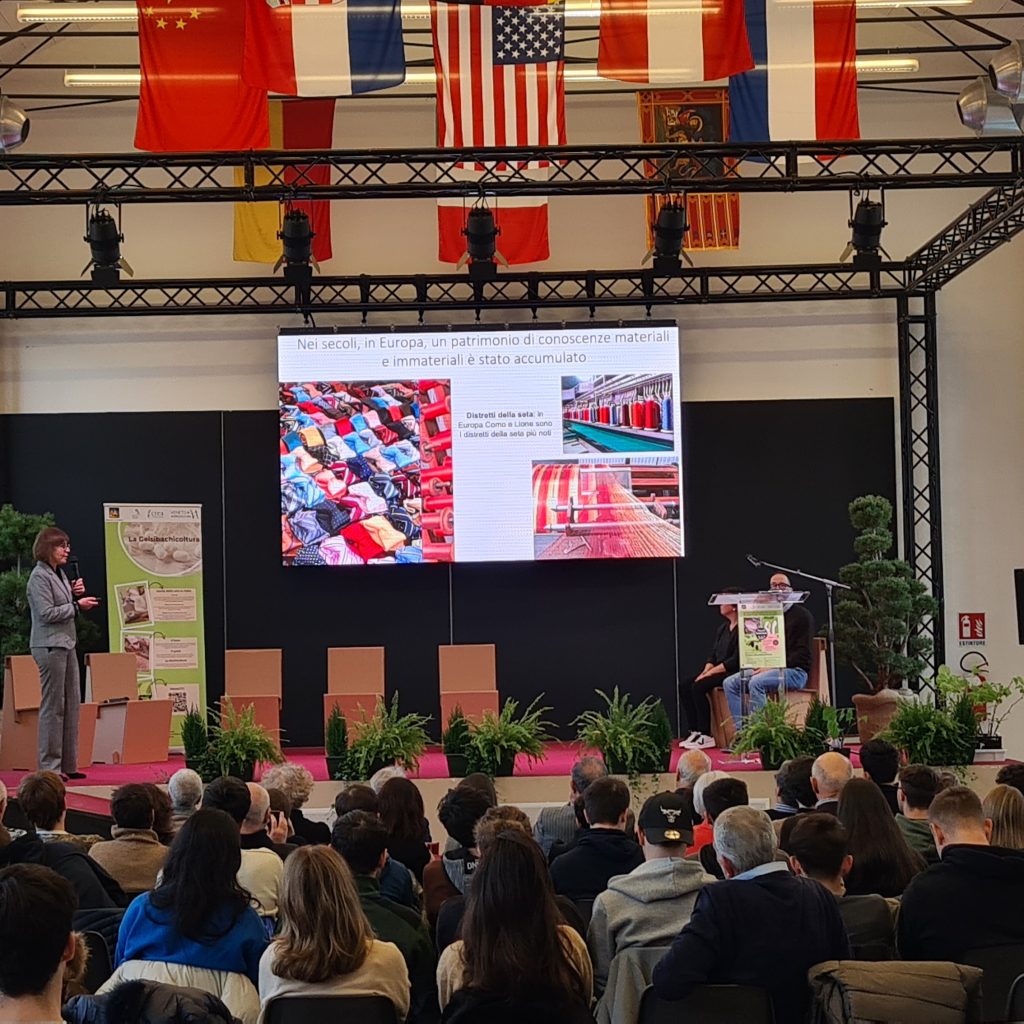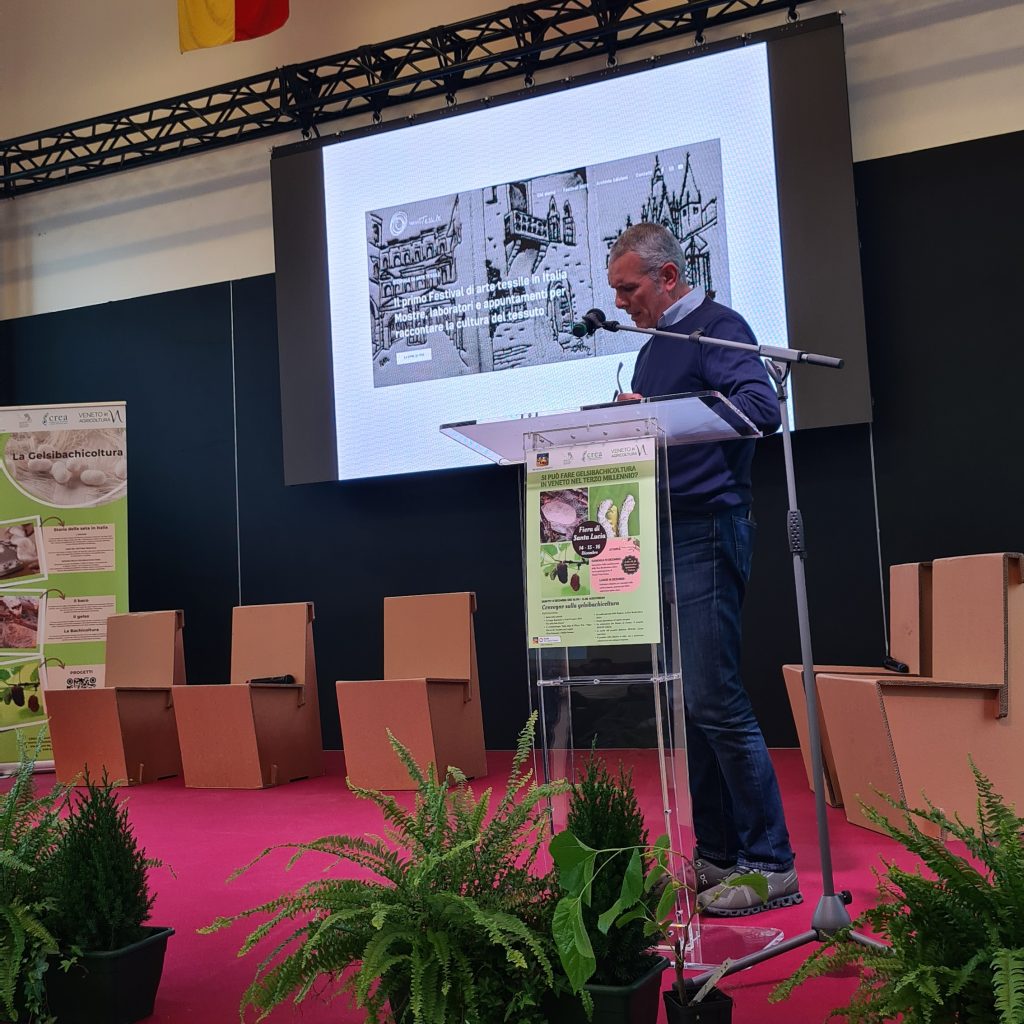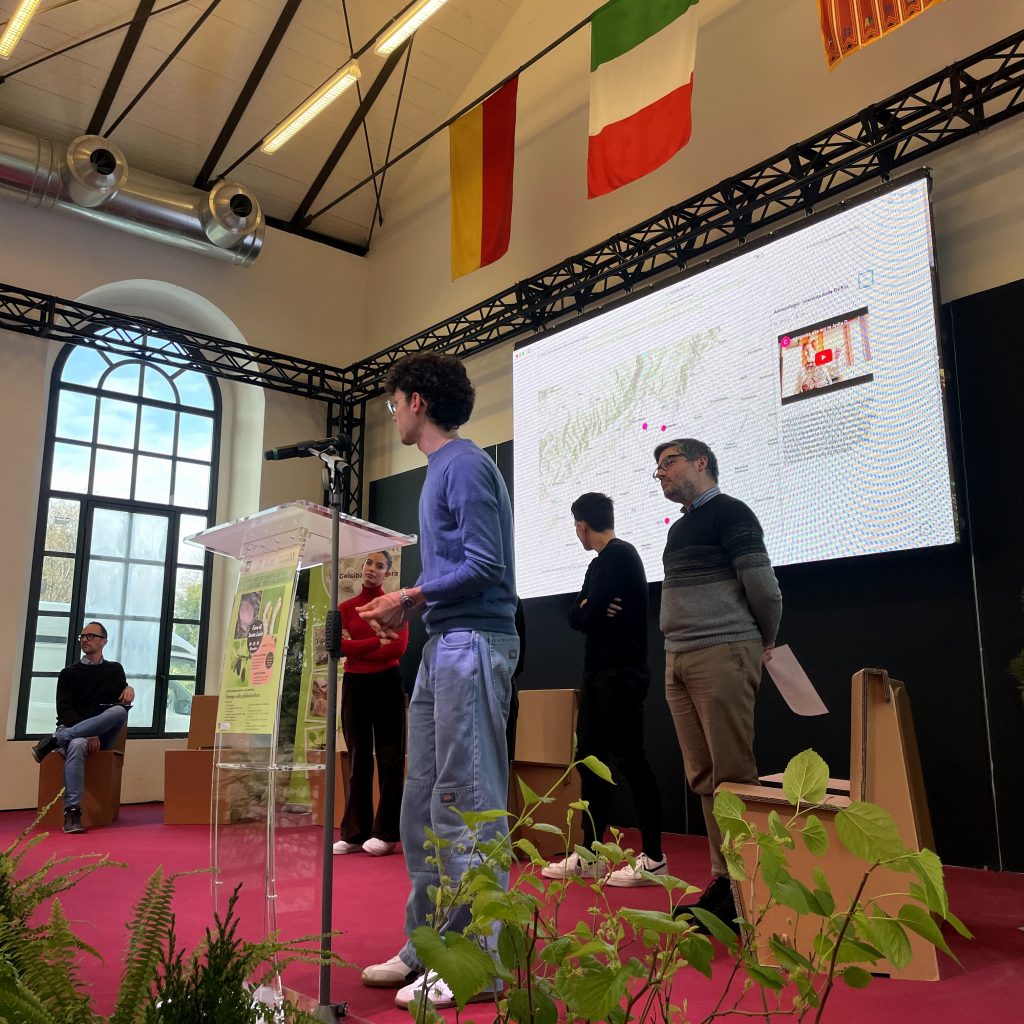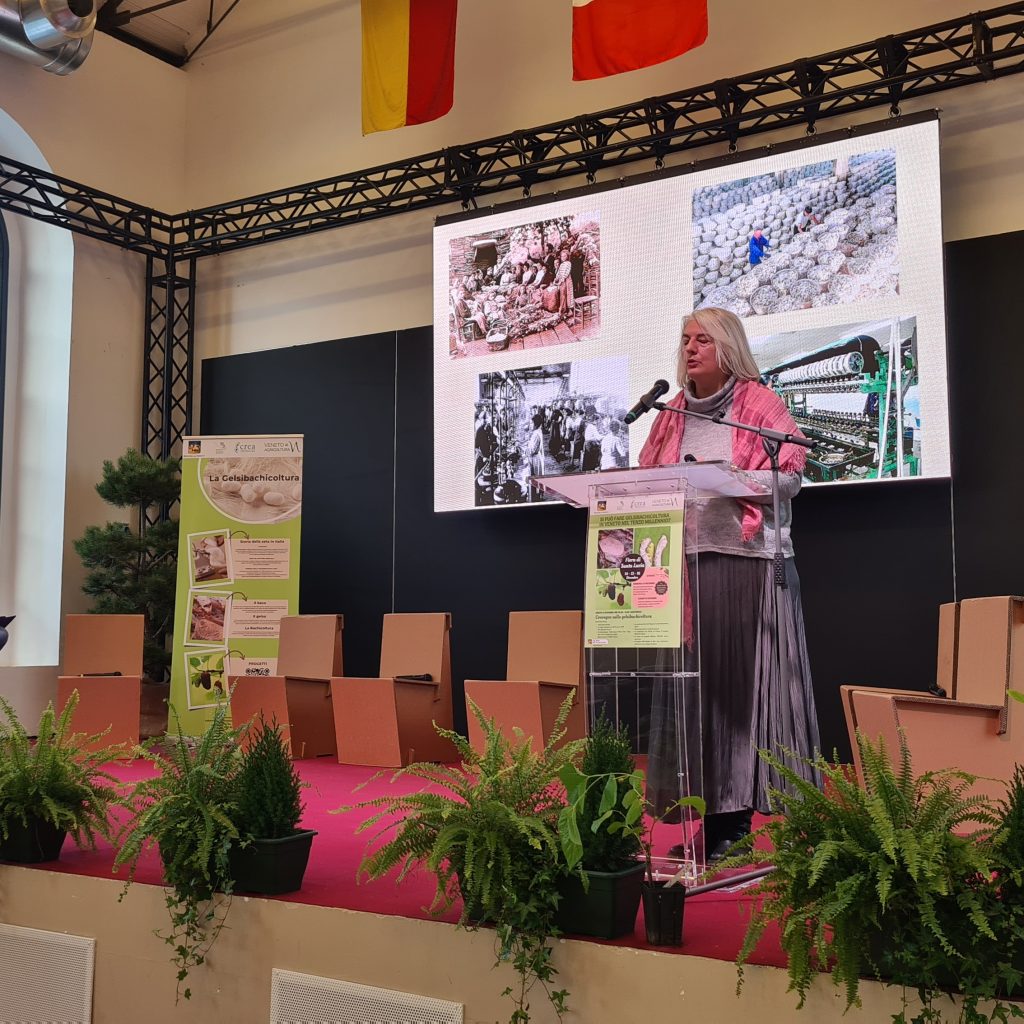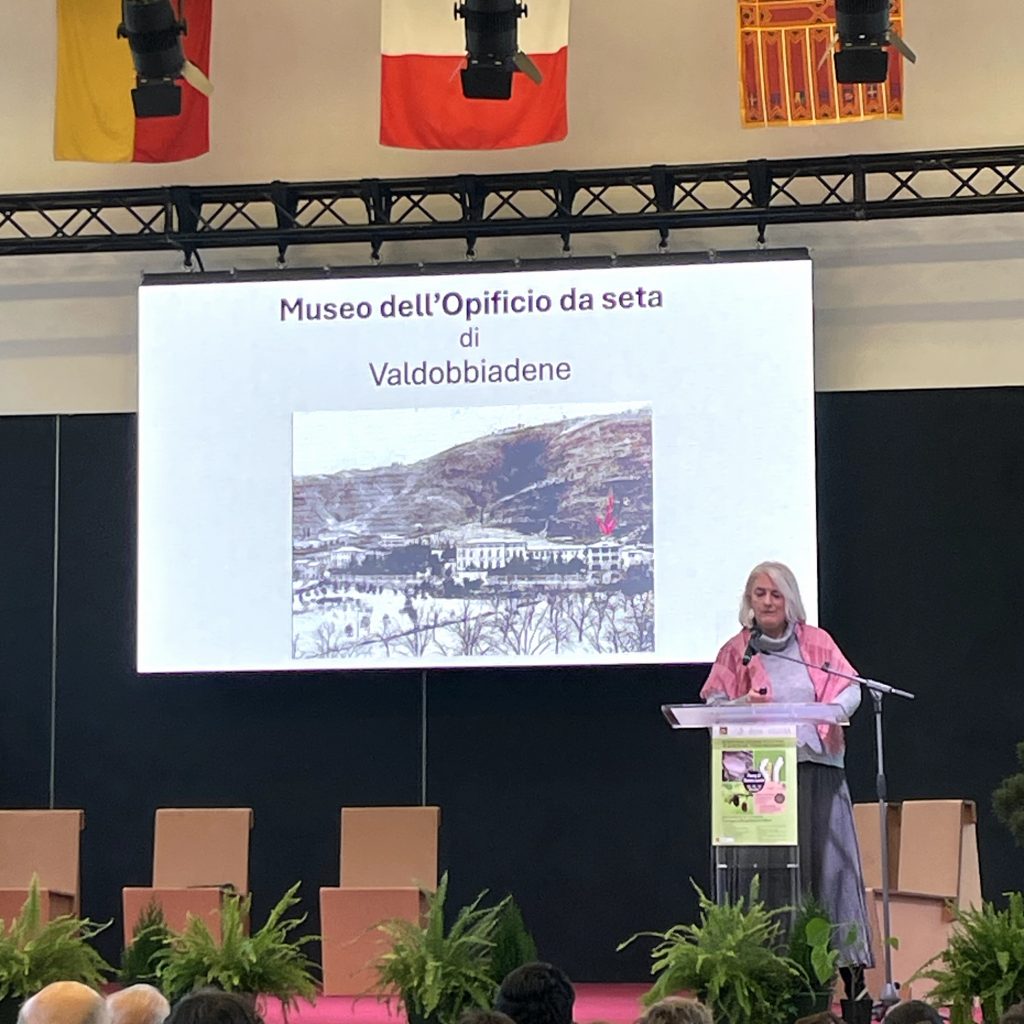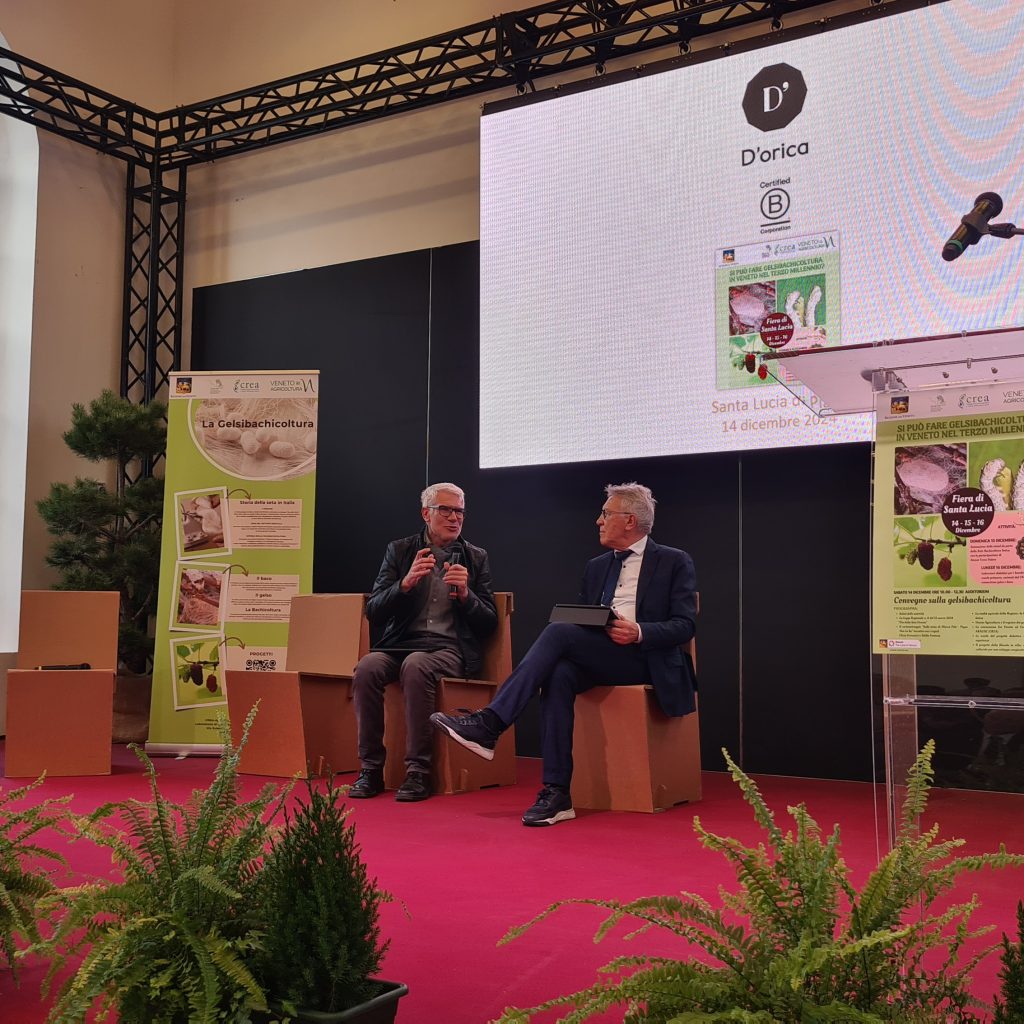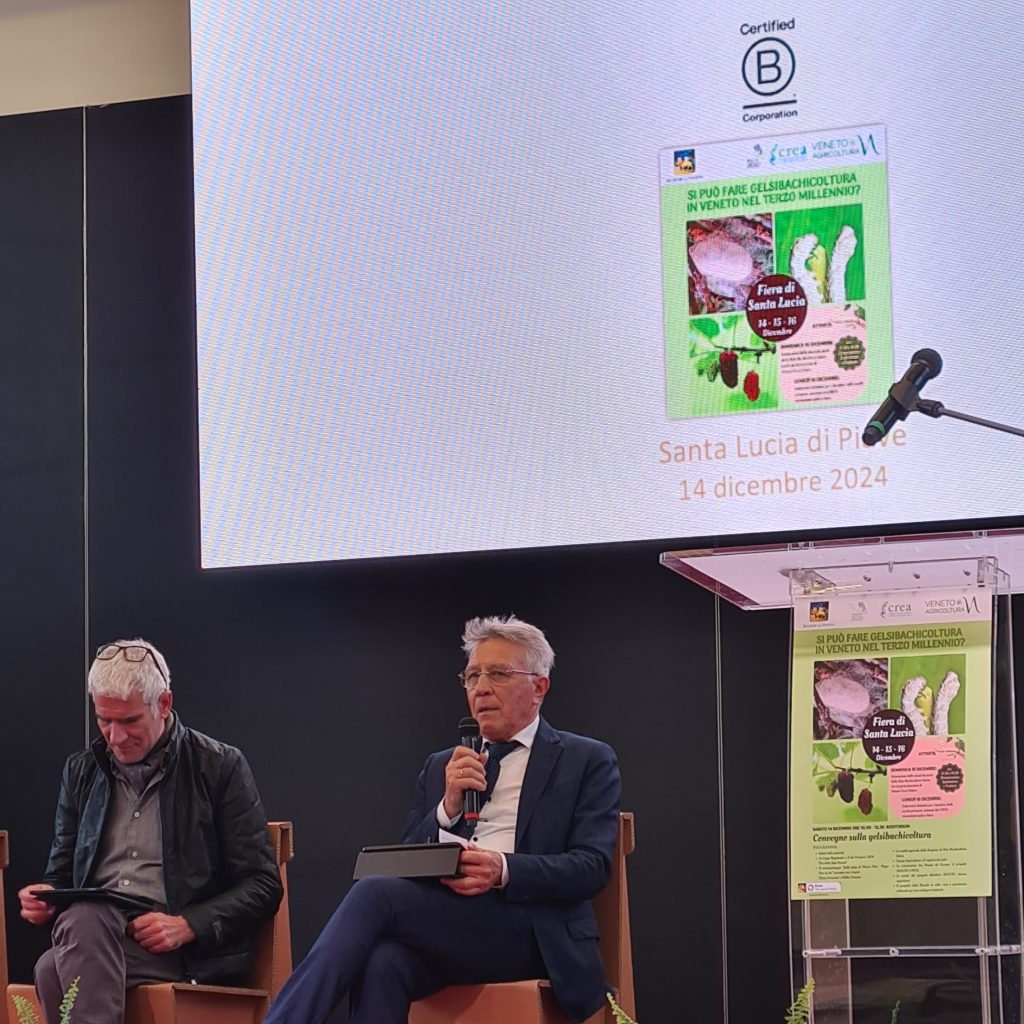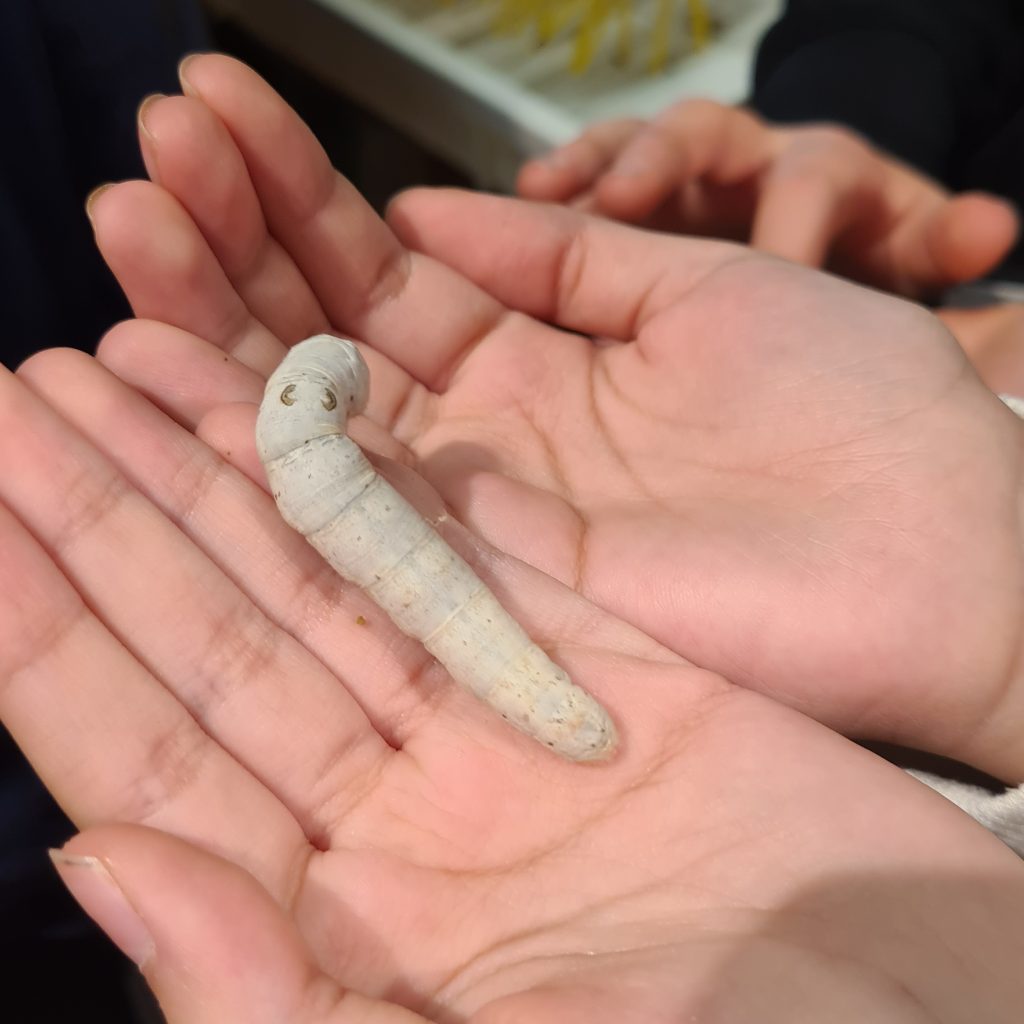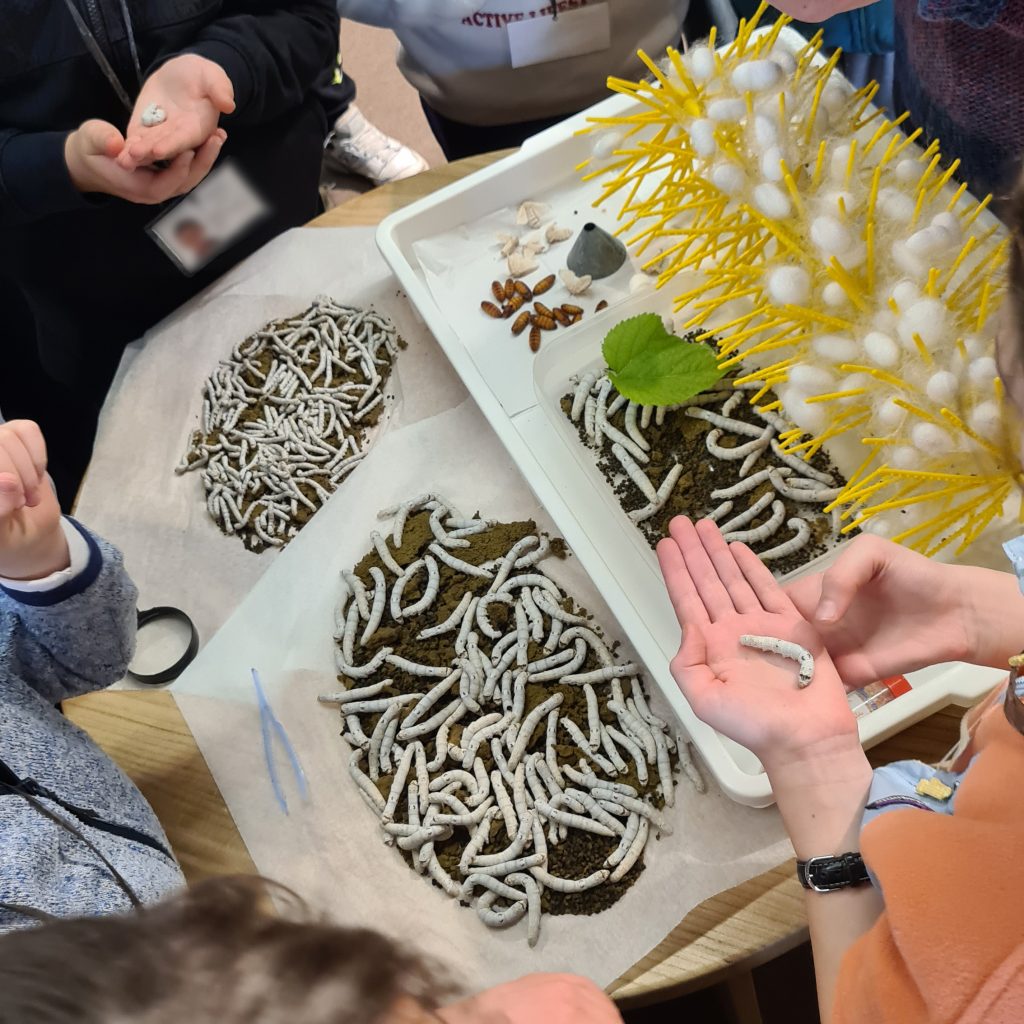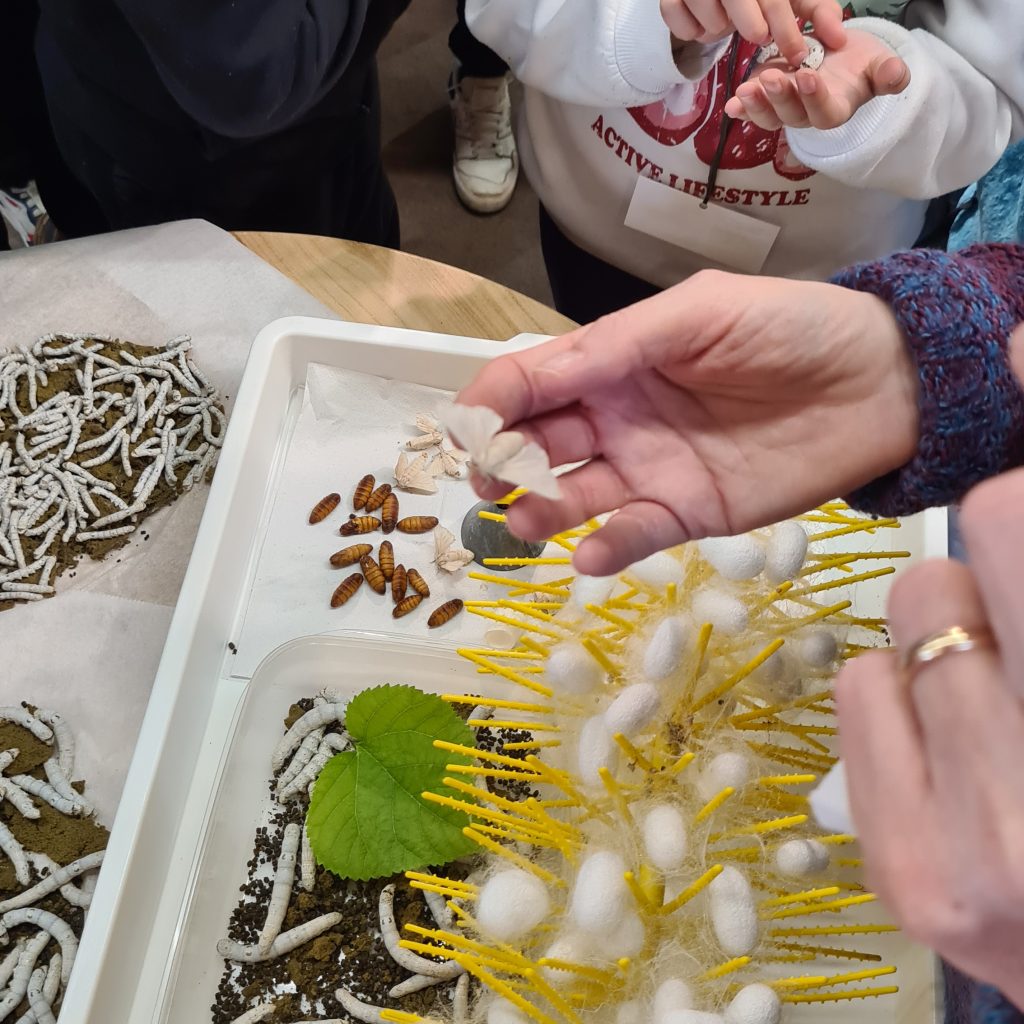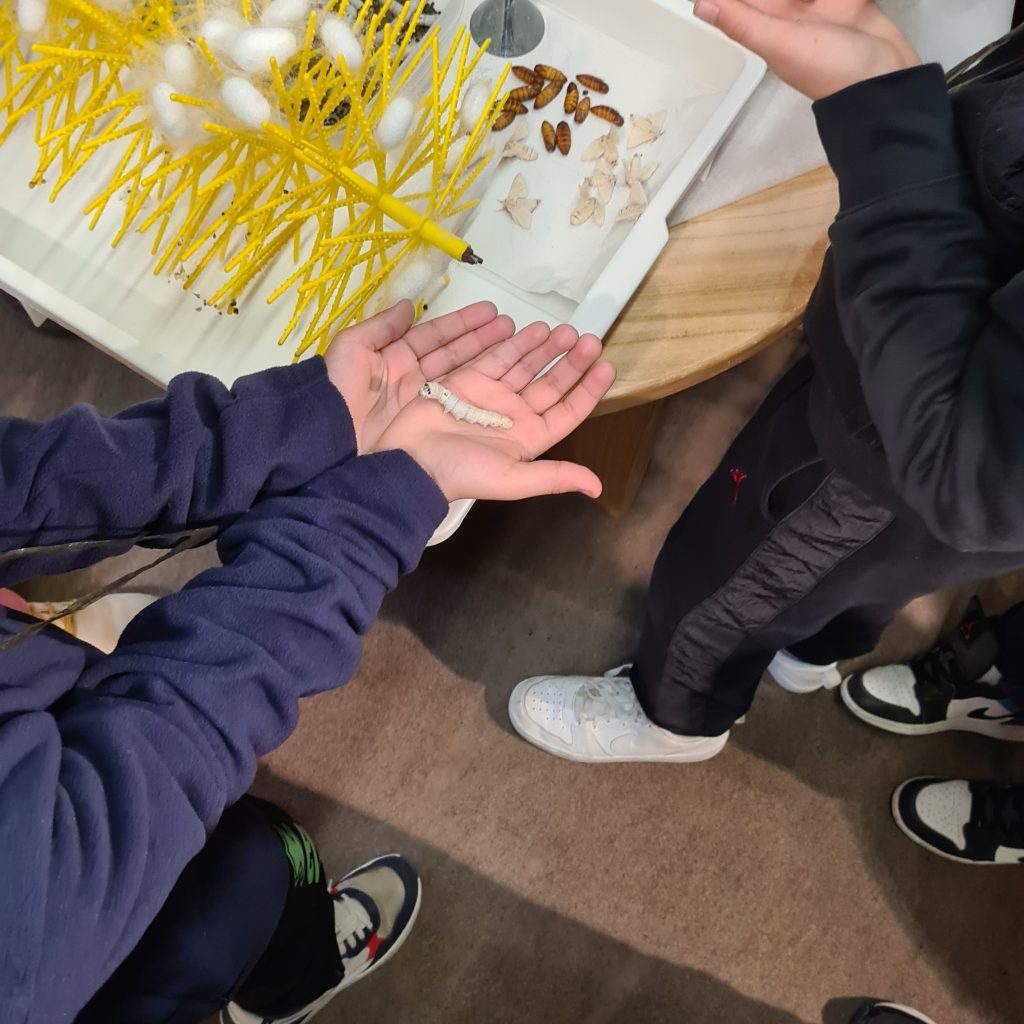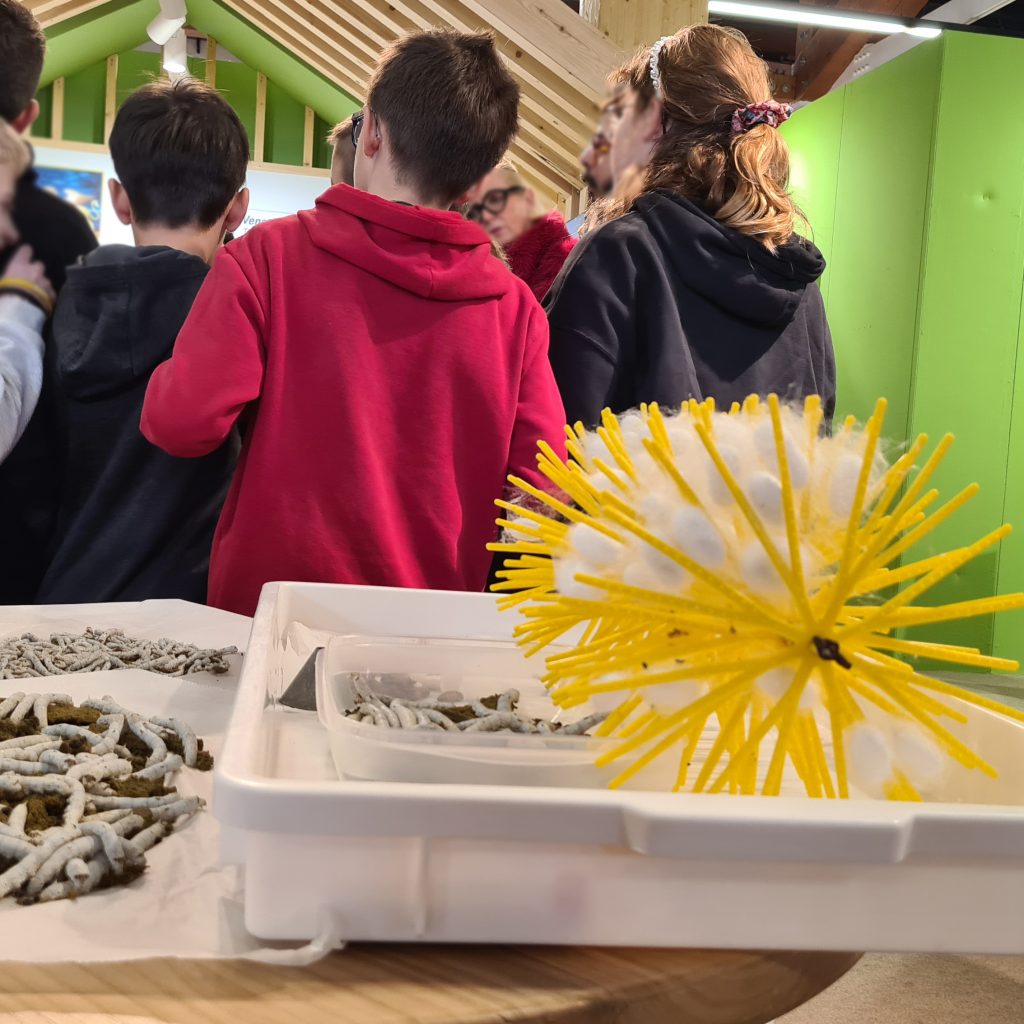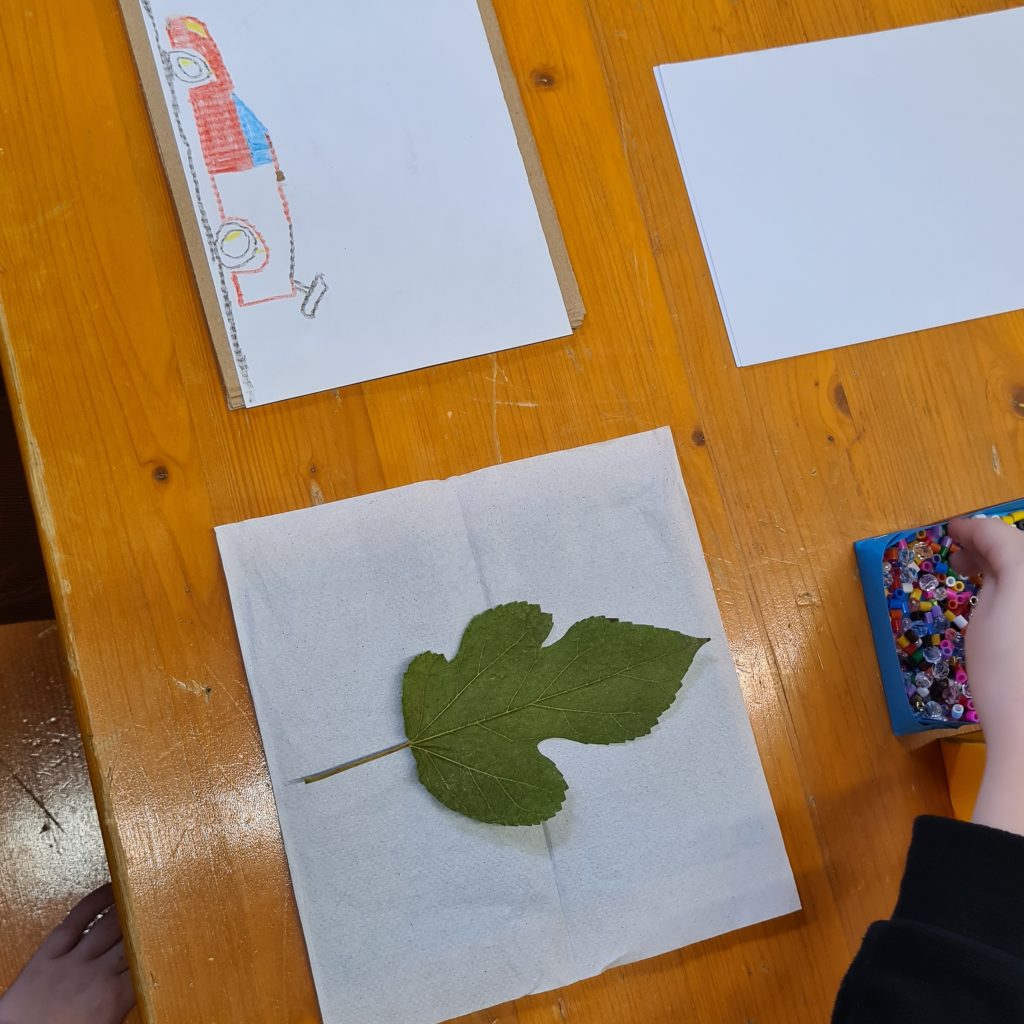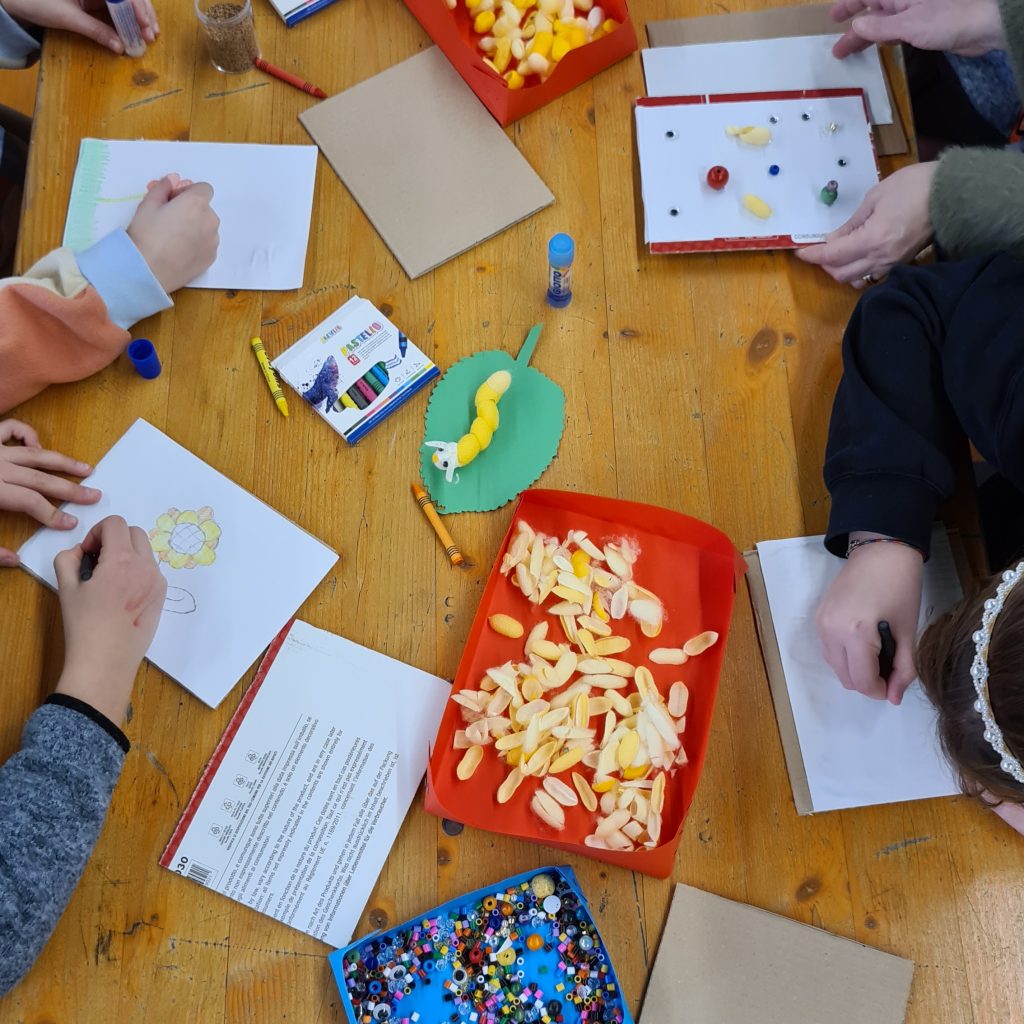Saturday 14th, Sunday 15th, and Monday 16th December marked the 1364th International Agriculture Fair of Santa Lucia di Piave, during which CREA – Agriculture and Environment – Sericulture Laboratory in Padua organized a series of activities to spread awareness about the current state of sericulture in Veneto. These activities were hosted at the Veneto Agricoltura and Regione Veneto stand.
Saturday 14th
In the Auditorium Hall of the Ex-Filanda pavilions, which represent beautifully restored industrial architectures, a conference titled: Can sericulture be carried out in Veneto in the third millennium? was held
The audience, consisting of students from Agriculture Technical Schools of Mirano and Feltre, teachers, and individuals interested in the revival of this historic production activity, which once thrived in Veneto, was welcomed by Dr. Fantinel Fiorenzo, Mayor of Santa Lucia di Piave, the host of this millennium-old event.
Institutional greetings from the Veneto Region were delivered by one of the Councillors of the Veneto Regional Government, Professor Giuseppe Pan, who also explained the concept inspring the regional law “Venetian Silk Road: provisions for the protection and enhancement of the mulberry trees , the promotion and support of sericulture, and the development of a regional cultural tourism itinerary,” for which he was the lead sponsor.
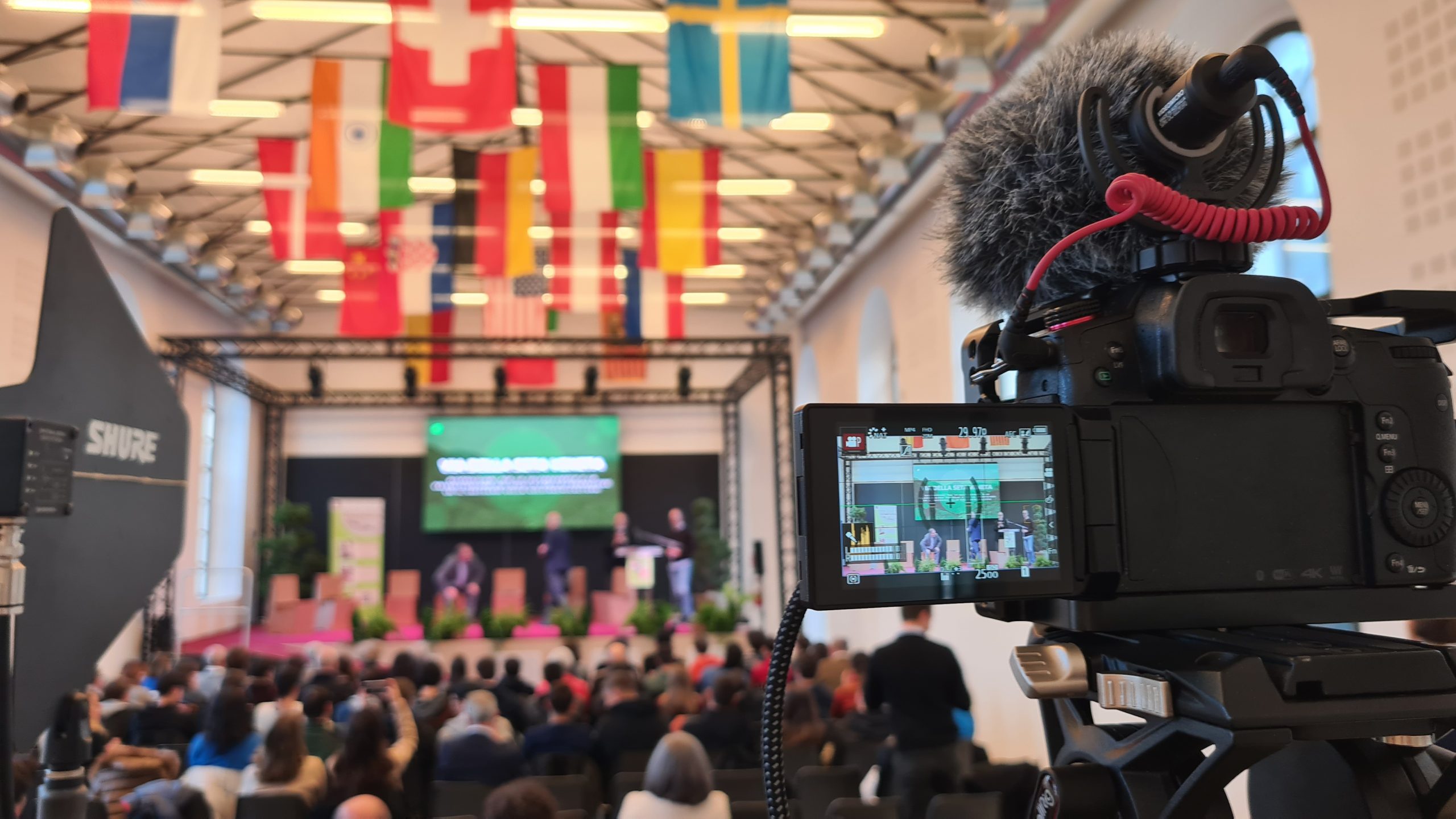
The following presentations were made:
- The agricultural representatives of the Region: the Sericulture Network “Bachicoltura Setica”
Giorgia Pattaro – Miotto Farm and Vice President of the Sericulture Network “Bachicoltura Setica” - The mulberry inventory and the connection between Veneto and Europe: the ARACNE project
Dr. Silvia Cappellozza – Research Manager at CREA’s Sericulture Laboratory in Padua - The Province of Verona and its contribution to the Verona Textile exhibition, May 14-18, 2025. The silk sector at a glance.
Dr. Fabio Pimazzoni – General Manager of Red Group Co.Ltd. - The participation of schools in the ARACNE educational project
The 5A class of “Marcantonio Flaminio” High School in Vittorio Veneto, led by Professor Giorgio Reolon, participated as a pilot class during the 2022-2023 school year in the first educational experiment of the ARACNE project, creating a geolocated map of places associated with silk culture in their territory. - The Silk Museum of Vittorio Veneto and the silk twister project in Valdobbiadene
Professor Elisa Bellato - The project to transfer a silk reeling machine into a Palladium Villa: silk and cultural heritage for joint development
Giampietro Zonta, founder of the BCorp D’Orica in 1989
With the participation of Professor Manlio Piva
Sunday 15th
At the stand set up with Lego-style houses by Veneto Agricoltura, members of the Sericulture Network “Bachicoltura Setica” and a representative of “Ateneo Terzo Valore”, a cultural association working with elder people, exhibited cocoons and machinery for reeling and twisting, organizing demonstrations for visitors.
A diorama depicting an old Venetian house, where silkworm farming took place in the 1950s, was set up by Mr. Adriano Favaro, sharing a cultural legacy that resonated with many visitors and being a sort of Nativity scene.
The President of the Veneto Region, Luca Zaia, who inaugurated the Fair, visited the stand, observed the exhibited silkworms, met with Veneto’s sericulture networkers, and enjoyed being photographed with them.
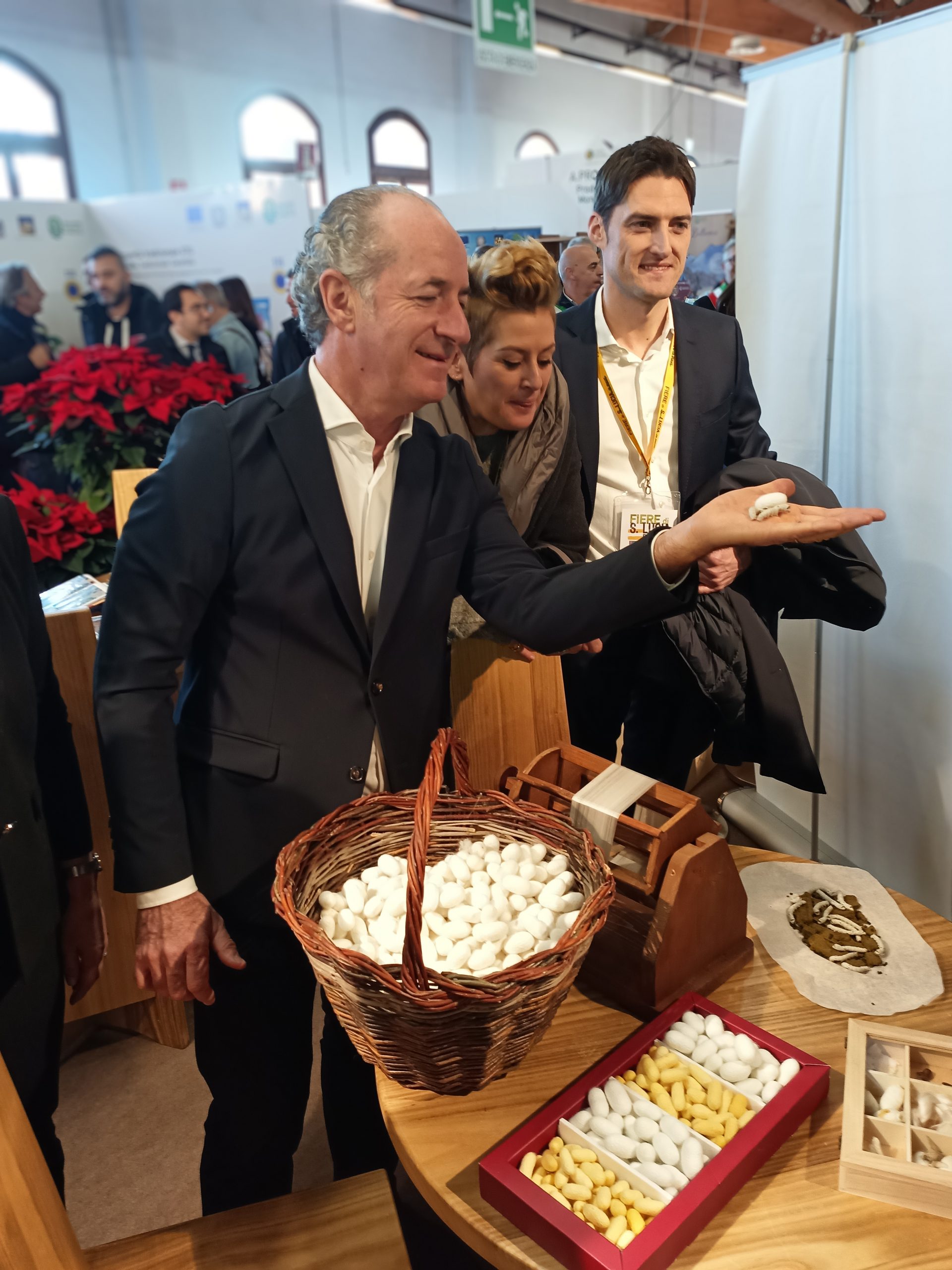
Monday 16th
On Monday, the CREA – Research Centre for Agriculture and Environment – Sericulture Laboratory and Veneto Agricoltura organized an educational workshop for primary school children. The activity offered an enchanting journey through “The Silk Road in Veneto”, featuring an interactive exhibition of mulberry trees, silkworms, and cocoons.
During the workshop, children observed silkworms at various stages of their life cycle and discovered the central role of this insect in European culture and economy.
They touched colourful cocoons, closely examined the silk production process, and created a thaumatrope, an optical toy blending science, creativity, and fun. Another proposed activity was building a herbarium with mulberry leaves, which encouraged observation and attention to detail, helping children recognize this plant in their surroundings.
The stand also featured an educational kit designed to allow schools to rear silkworms on artificial diet even outside the traditional season.
In the afternoon, the stand was open to all visitors, who observed silkworms and mulberry plants, often delving into nostalgia as they recalled family memories of sericulture during the years when this activity was a significant source of income for Venetian farmers.
